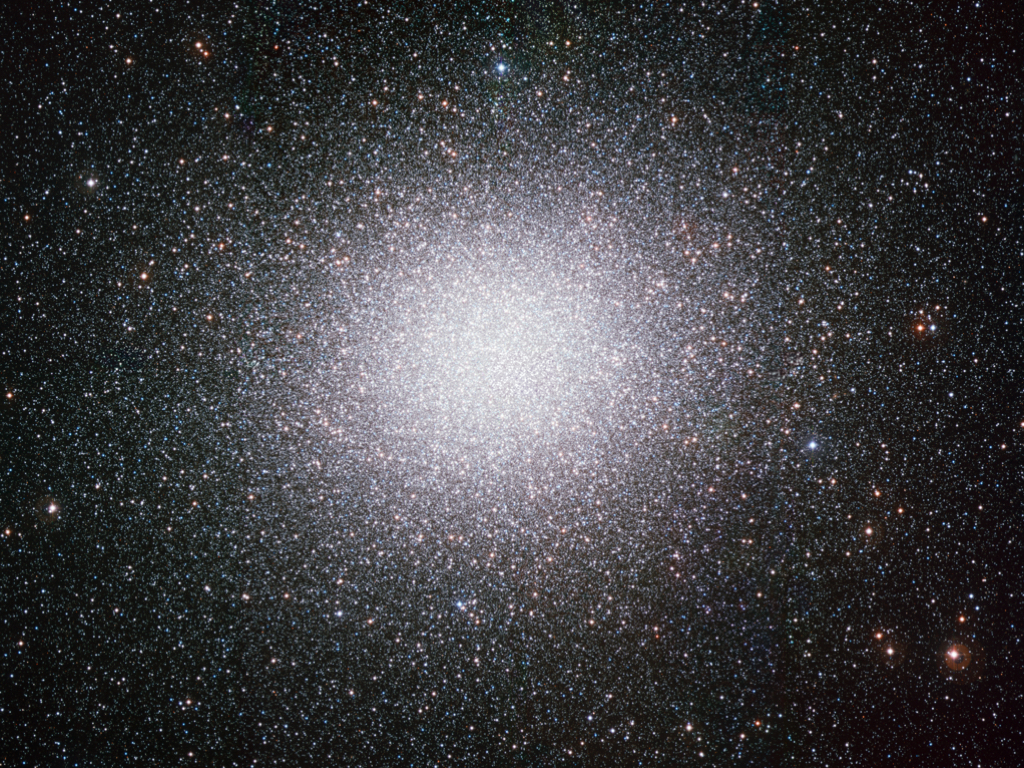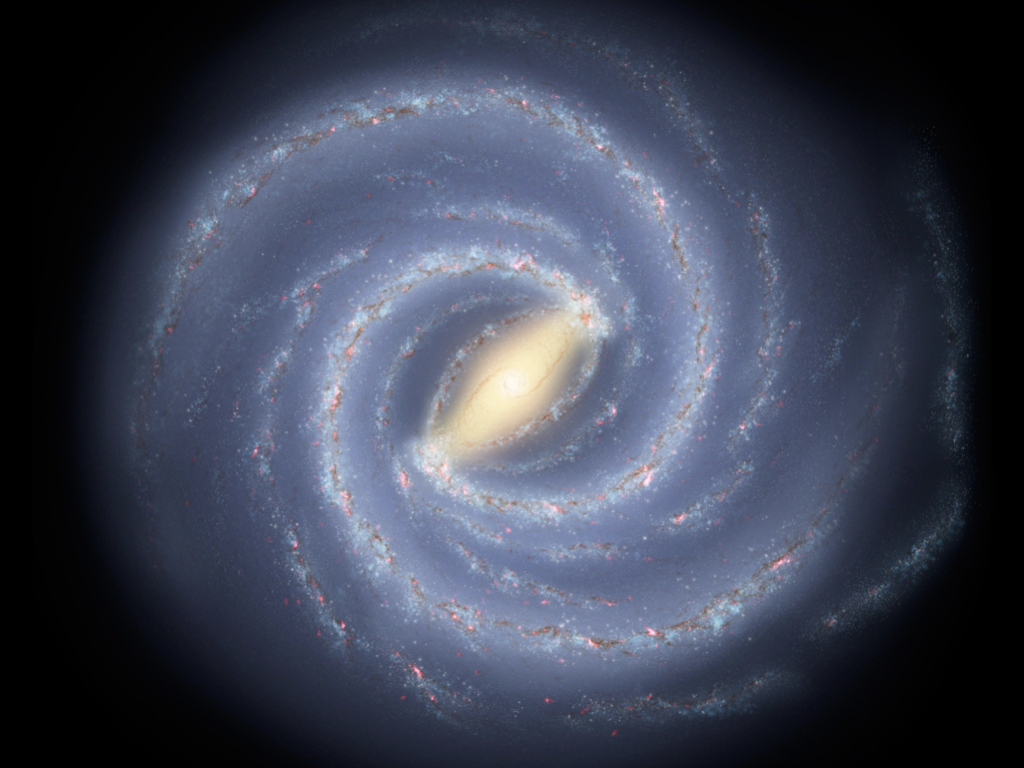A Supermassive Black Hole Like No Other, But Optimal for Life
I have a problem with the Star Wars movies. Each saga film opens with the famous words, “In a galaxy far, far away.” We astronomers have observed thousands of far, far away galaxies and, unfortunately for Luke Skywalker and friends, none possess the features that support advanced life. Our Milky Way Galaxy is the only known life-friendly galaxy.
The list of characteristics necessary for life is long. In the last few weeks, months, and years astronomers have discovered yet another feature of the Milky Way Galaxy (MWG) that makes it uniquely qualified to host advanced life. It possesses a supermassive black hole like no other.
As I explained in last week’s blog, a supermassive black hole has a mass that exceeds one million times the Sun’s mass. All medium, large, and giant galaxies possess a supermassive black hole (SMBH) in the central part of their core. From just outside their event horizons, these SMBHs emit deadly radiation that renders advanced life impossible in these galaxies. Sometimes this radiation is so powerful that it renders advanced life impossible in all galaxies within its vicinity.
SMBH in the Milky Way
If the radiation from SMBHs in other galaxies is deadly, then why can’t we say the same of the radiation from the SMBH in our galaxy? Part of the answer to this question is that the MWG possesses an exceptionally low-mass SMBH. Its SMBH weighs in at only 4.02±0.16 million solar masses.1 This low mass establishes a limit on how much deadly radiation can emanate from the MWG’s SMBH.
Our local SMBH’s low mass is truly extraordinary. Astronomers have determined consistent correlations between four different galaxy characteristics and the respective masses of the galaxies’ SMBHs:
- Number of globular clusters orbiting about the galaxy2
- Mass of the galaxy’s central bulge3
- Luminosity of the galaxy4
- Velocity dispersion (range of velocities) of the stars in the galaxy’s central bulge5
A globular cluster is a very dense array of 100,000–10,000,000 stars (see figure 1). A galaxy’s central bulge refers to its core, where the density of stars is equal to, or near, that of a globular cluster’s star density (see figure 2). The velocity of the gas in the galaxy’s central bulge is directly proportional to the mass of its SMBH. Gas velocity can be difficult to measure. Fortunately, the velocity dispersion of stars in a central bulge is easier to measure and has been demonstrated to correlate tightly with the gas velocity.

Figure 1: Omega Centauri Globular Cluster. Image credit: European Southern Observatory

Figure 2: Central Bulge of the NGC 3344. The central bulge is the solid white, oval-shaped region. For most galaxies, the central bulge contains about half the galaxy’s stars. Image credit: NASA/ESA/Hubble Space Telescope/STScI
However, astronomers Kastytis Zubovas and Andrew King have demonstrated that SMBH mass measurements differ based on the type of host galaxy.6 For example, these correlations indicate higher SMBH masses for supergiant elliptical galaxies in the cores of large galaxy clusters than they do for elliptical field galaxies that exist outside of, or on the fringes of, galaxy clusters. Likewise, these correlations indicate higher SMBH masses for elliptical field galaxies than they do for spiral galaxies. And among spiral galaxies, other astronomers have shown that spiral galaxies manifesting a central bar structure tend to possess slightly less-massive SMBHs than do spiral galaxies without a central bar structure.7
Because the MWG is a spiral galaxy that possesses a central bar structure (see figure 3), astronomers would expect an SMBH mass somewhat lower than what the four correlations would otherwise indicate based on the average properties of the known population of galaxies. However, the MWG possesses a much lower SMBH mass than what this small adjustment would imply.

Figure 3: Structure of the Milky Way Galaxy. This map of the MWG was constructed from observations across the electromagnetic spectrum of multiple components of the galaxy. Image credit: NASA/JPL-Caltech/R. Hurt
The mass of the Andromeda Galaxy’s SMBH is in agreement with the four correlations. Since the MWG possesses the same mass as Andromeda (the total mass for both = 1.5 trillion solar masses)8 and both are spiral galaxies with a bar,9 the MWG’s SMBH should be about the same mass. Instead, it measures to be about twenty times less massive.
Optimal SMBH
That the MWG’s SMBH is twenty times less massive than the SMBHs in other galaxies of the same size and structure means that our galaxy’s SMBH has about twenty times less potential to emit deadly radiation from the regions just outside its event horizon. That factor of twenty times is one reason why advanced life is possible in the MWG.
Another important reason why advanced life can exist in the MWG is that its SMBH is very quiet at present. The quantity and the intensity of deadly radiation emitted by an SMBH depend on how much gas, dust, comets, asteroids, planets, and/or stars are being drawn toward the SMBH’s event horizon. SMBHs in nearby galaxies consume a solar-type star on average about once every 100,000 years.10 When that happens, a bright flare lasting several months pours out deadly radiation throughout the galaxy. Stars smaller than the Sun get consumed in these galaxies about once every 10,000 years, resulting in deadly radiation lasting several days to weeks. These galaxies also consume molecular clouds of gas on time scales ranging from once a century to once every few millennia that likewise result in the emission of deadly radiation lasting days to weeks.
By comparison, the MWG’s SMBH produces tiny flares that last only hours but occur on an almost daily basis.11 In 2012, a team of three astronomers demonstrated that being surrounded by super-Oort clouds of comets and asteroids explains the near-continual high radiation activity from regions outside the event horizons of SMBHs in active galactic nuclei. It is likely that some kind of Oort cloud surrounds all SMBHs.12 A relatively modest Oort cloudsurrounding the MWG’s SMBH explains the observed tiny frequent flares.13
As several astronomers have noted, the MWG’s nucleus is exceptionally quiet and has been for billions of years.14 The low mass of our galaxy’s SMBH, the tiny size of its surrounding Oort cloud, and the lack of merger events with large- and medium-sized dwarf galaxies over the past several billion years explain why life has survived and thrived on Earth throughout the past 3.8 billion years. That the activity level just outside the event horizon of the MWG’s SMBH has been extremely quiet throughout the past 10,000 years explains why global human civilization has flourished.
Our galaxy’s SMBH is like no other. It is exquisitely fine-tuned and designed to make possible not only the existence of human beings but also the existence of global high-technology civilization. Apparently, Someone wanted billions of humans to exist and to possess high-technology and to use that technology for a specified purpose.
Featured image: Artist’s Conception of a Supermassive Black Hole
Image credit: NASA/JPL-Caltech
Check out more from Reasons to Believe @Reasons.org
Endnotes
- A. Boehle et al., “An Improved Distance and Mass Estimate for Sgr A* from a Multistar Orbit Analysis,” Astrophysical Journal 830, no. 1 (October 10, 2016): id. 17, doi:10.3847/0004-637X/830/1/17.
- Rosa A. González-Lópezlira et al., “The Relation between Globular Cluster Systems and Supermassive Black Holes in Spiral Galaxies: The Case Study of NGC 4258,” Astrophysical Journal 835, no. 2 (February 1, 2017): id. 184, doi:10.3847/1538-4357/835/2/184.
- Yohei Miki et al., “Hunting a Wandering Supermassive Black Hole in the M31 Halo Hermitage,” Astrophysical Journal 783, no. 2 (March 10, 2014): id. 87, doi:10.1088/0004-637x/783/2/87.
- Kayhan Gültekin et al., “The M-σ and M-L Relations in Galactic Bulges, and Determinations of Their Intrinsic Scatter,” Astrophysical Journal 698, no. 1 (June 10, 2009): 198–221, doi:10.1088/0004-637X/698/1/198.
- Alper K. Ates, Can Battal Kilinç, and Cafer Ibanoglu, “On the M-σ Relationship and SMBH Mass Estimates of Selected Nearby Galaxies,” International Journal of Astronomy and Astrophysics 3, no. 3A (July 2013): 1–9, doi:10.4236/ijaa.2013.33A001; Wol-Rang Kang et al., “Calibrating Stellar Velocity Dispersions Based on Spatially Resolved H-Band Spectra for Improving the MBH-σ* Relation,” Astrophysical Journal 767, no. 1 (April 10, 2013): id. 26, doi:10.1088/0004-637X/767/1/26.
- K. Zubovas and A. R. King, “The M-σ Relation in Different Environments,” Monthly Notices of the Royal Astronomical Society 426, no. 4 (November 2012): 2751–57, doi:10.1111/j.1365-2966.2012.21845.x.
- Markus Hartman et al., “The Effect of Bars on the M*-σe Relation: Offset, Scatter, and Residuals Correlations,” Monthly Notices of the Royal Astronomical Society 441, no. 2 (June 2014): 1243–59, doi:10.1093/mnras/stu627; Sergei Navakshin, Chris Power, and Andrew R. King, “The Observed M-σRelations Imply that Super-Massive Black Holes Grow by Cold Chaotic Accretion,” Astrophysical Journal 753, no. 1 (July 2012): id. 15, doi:10.1088/0004-637X/753/1/15.
- Laura L. Watkins et al., “Evidence for an Intermediate-Mass Milky Way from Gaia DR2 Halo Globular Cluster Motions,” Astrophysical Journal 873, no. 2 (March 20, 2019): id. 118, doi:10.3847/1538-4357/ab089f; Prajwal R. Kafle et al., “The Need for Speed: Escape Velocity and Dynamical Mass Measurements of the Andromeda Galaxy,” Monthly Notices of the Royal Astronomical Society 475, no. 3 (April 2018): 4043–54, doi:10.1093/mnras/sty082; Jorge Penarrubia et al., “A Dynamical Model of the Local Cosmic Expansion,” Monthly Notices of the Royal Astronomical Society 443, no. 3 (September 2014): 2204–22, doi:10.1093/mnras/stu879.
- Rachel L. Beaton et al., “Unveiling the Boxy Bulge and Bar of the Andromeda Spiral Galaxy,” Astrophysical Journal Letters 658, no. 2 (April 1, 2007): L91–L94, doi:10.1086/514333.
- Kastytis Zubovas, Sergei Navakshin, and Sera Markoff, “Sgr A* Flares: Tidal Disruption of Asteroids and Planets?” Monthly Notices of the Royal Astronomical Society 421, no. 2 (April 1, 2012): 1315–24, doi:10.1111/j.1365-2966.2011.20389.x.
- Zubovas, Navakshin, and Markoff, 1315–24.
- Sergei Navakshin, Sergey Sazonov, and Rashid Sunyaev, “Are Supermassive Black Holes Shrouded by ‘Super-Oort’ Clouds of Comets and Asteroids?” Monthly Notices of the Royal Astronomical Society 419, no. 2 (January 11, 2012): 1238–47, doi:10.1111/j.1365-2966.2011.19777.x.
- Zubovas, Navakshin, and Markoff, “Sgr A* Flares,” 1315–24.
- F. Hammer et al., “The Milky Way, an Exceptionally Quiet Galaxy: Implications for the Formation of Spiral Galaxies,” Astrophysical Journal 662, no. 1 (June 10, 2007): 322–34, doi:10.1086/516727; F. Hammer et al., “The Milky Way and Other Spiral Galaxies,” Assembling the Puzzle of the Milky Way, edited by C. Reylé, A. Robin, and M. Schultheis, EPJ Web of Conferences 19 (February 2012): id. 01004, doi:10.1051/epjconf/20121901004.





